NOAA HAB Liaison Project
Working Nationally to Detect & Predict HABs
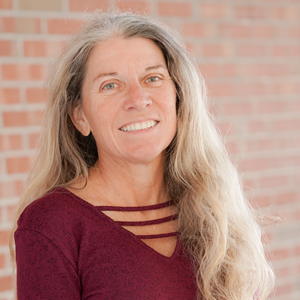
Photo of Betty Staugler
Florida Sea Grant’s NOAA HAB Liaison, Betty Staugler, forges and enhances partnerships across the nation by providing expertise, research, and extension services that leverage partners’ work to efficiently meet the needs of coastal and Great Lakes communities threatened by harmful algal blooms (HAB). This includes seeking new ways to extend NOAA HAB products and services, while also informing NCCOS, CoastWatch, and IOOS on Sea Grant stakeholder needs and research priorities.
Testimonials

PI: Dr. Sherry Larkin, Florida Sea Grant
Recap: A NOAA Harmful Algal Bloom (HAB) liaison is working to improve end-user decision making through coordination, integration, and transference of HAB forecasting knowledge and tools generated by NOAA.
Relevance: Harmful algal blooms (HABs) have been reported to occur in the surface waters of all 50 U.S. states and are increasing globally. HABs occur when photosynthetic algae that live in fresh, brackish or marine waters grow out of control (i.e., “bloom”) and have adverse effects on people or ecosystems. These HABs can result in significant socioeconomic impacts due to shellfish closures, wild or farmed fish mortalities, human health impacts, lost coastal recreation and tourism, reduced waterfront property values, and consumers who avoid consuming seafood. Early detection can mitigate some of the harmful effects of HABs, thus reducing associated socioeconomic impacts.
Response: The nationally-funded NOAA HAB Liaison project created a partnership position between Sea Grant and the federal agency NOAA. The NOAA HAB Liaison is developing collaborations with partners and stakeholders across the national Sea Grant network to support planning, research and technological solutions to address HAB issues, ensure coastal communities have access to and use sound science, data, tools, and the training to be effective in planning and decision-making relative to HABs.
The overall project is being managed through both an advisory committee and points of contact that together will help develop a new HAB Community of Practice (CoP). Ultimately, CoP members will learn about and be trained on tools and products of the federal partners and they will subsequently share these tools with their community partners.
Supplemental Information: Project Implementation Plan
Sea Grant Week Presentation: NOAA HAB Update
HAB Science: Sea Grant Tip Sheet
Working Together
Project
Partners
The NOAA HAB Liaison project is led by Florida Sea Grant and has 4 core partners. The project benefits from an advisory committee comprised of participating programs and partners that meets annually to provide input on project end-user needs, program development and guidance/feedback.
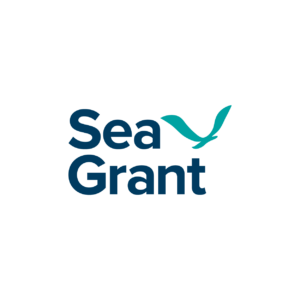
The Sea Grant network is directly connected to communities and widely regarded as a trusted
partner at local, state and national levels.
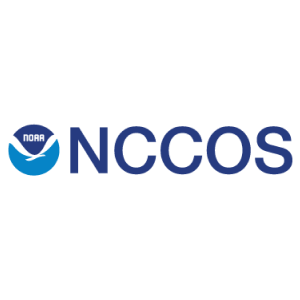
The National Centers for Coastal Ocean Science develops HAB forecasts and predictive models for water bodies across the nation.
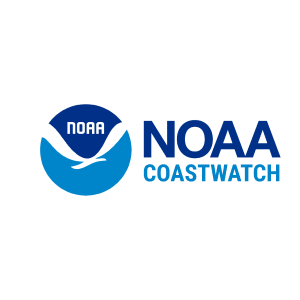
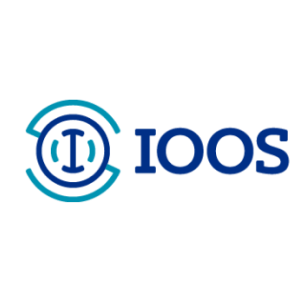
Project Team
Partners Contacts:
- Dr. Rick Stumpf, NCCOS
- Dr. Veronica Lance, NOAA CoastWatch
- Chris Petrone, Sea Grant
Participating Program Directors (AC):
- Dr. Sherry Larkin, Florida Sea Grant
- Dr. Fredrika Moser, Maryland Sea Grant
- Dr. LaDon Swan, Mississippi-Alabama Sea Grant
- Dr. Rebecca Shuford, New York Sea Grant
- Dr. Chris Winslow, Ohio Sea Grant
- Dr. Pamela Plotkin, Texas Sea Grant
- Katie Litle , Washington Sea Grant
- Dr. Julie Lively, Louisiana Sea Grant
- Dr. Silvia Newell, Michigan Sea Grant
Participating Programs (AC):
- TBD, Great Lakes Observing System (GLOS)
- Dr. Barb Kirkpatrick, Gulf of Mexico Coastal Ocean Observing System (GCOOS)
- Dr. Gerhard Kuska, Mid-Atlantic Regional Association Coastal Ocean Observing System (MARACOOS)
- Dr. Jan Newton, Northwest Association of Networked Ocean Observing Systems (NANOOS)
- Dr. Clarissa Anderson, Southern California Coastal Ocean Observing System (SCCOOS)
- Debra Hernandez, Southeast Coastal Ocean Observing Regional Association (SECOORA)
Regional
Progress
Summaries
Throughout the HAB Liaison 4-year project, significant strides were made in fostering collaboration, improving communication, organizing workshops, advancing research, and strengthening the HAB response network across various stakeholders and geographic regions.
Yearly
Project
Highlights
Throughout the HAB Liaison 4-year project, significant strides were made in fostering collaboration, improving communication, organizing workshops, advancing research, and strengthening the HAB response network across various stakeholders, ensuring that these efforts would continue beyond the project’s lifespan.
Building Relationships & Foundations
• The liaison initiated the project by focusing on building a national network, conducting 31 “Meet and Greet” meetings with 69 individuals, and creating a key contacts list.
• Organized the first steps for national conference sessions, including a request for a satellite-focused session at the U.S. Symposium on Harmful Algae (USHABs) and a session on community engagement at the Joint Aquatic Science Meeting (JASM) in 2022.
• Developed a project implementation plan and held a kickoff advisory committee meeting.
• Early groundwork was laid to foster collaboration and establish relationships across Sea Grant programs, NCCOS, CW, and IOOS-RAs.
Communication Tools & Workshops
• A range of communication tools were developed, including a quarterly E-newsletter, blogs, and a community of practice webpage.
• Co-organized a session at the Joint Aquatic Science Meeting on community-engaged research.
• Held a full advisory committee meeting in November 2022 and an update meeting during Sea Grant Week.
• Focused on engaging stakeholders through workshops like the satellite detection workshop and worked to establish training materials for CoastWatch.
• Established the “HAB chats” as a key forum to engage Sea Grant faculty and staff and develop a broader Community of Practice (CoP).
Expanding Engagement & Advanced Workshops
• The liaison was appointed to the Interagency Working Group for HABHRCA, participating in the S. Florida Assessment and organizing listening sessions for public input.
• Held a HAB forecasting workshop in Chesapeake Bay and a Blue-green Algae Symposium in Florida.
• Developed and co-organized several specialized workshops, including the successful workshop on the DinoSHIELD red tide biological control technology in Southwest Florida.
• Facilitated bi-monthly HAB chats, engaging 21 participants from 18 programs.
• Continued developing and distributing training resources, including the creation of the CoastWatch training course for Sea Grant partners.
Strengthening Networks & Advanced Data Tools
• Co-organized a Sea Grant/CoastWatch Long Island Sound workshop to improve the use of satellite data for water quality and HAB response.
• Played a key role in delivering real-time satellite bloom information and coordinating with local stakeholders to improve HAB detection in the northeast.
• Continued to develop and refine training resources and courses, such as the two-tiered CoastWatch training.
• Engaged with a wide range of stakeholders, co-producing Regional Vignettes and giving presentations at conferences, including the USHABs Conference.
• The liaison adapted the HAB chat format based on feedback to further enhance collaboration and the exchange of knowledge across the Sea Grant network.
Yearly
Project
Highlights
Throughout the HAB Liaison 4-year project, significant strides were made in fostering collaboration, improving communication, organizing workshops, advancing research, and strengthening the HAB response network across various stakeholders, ensuring that these efforts would continue beyond the project’s lifespan.
Communication Tools & Workshops
• A range of communication tools were developed, including a quarterly E-newsletter, blogs, and a community of practice webpage.
• Co-organized a session at the Joint Aquatic Science Meeting on community-engaged research.
• Held a full advisory committee meeting in November 2022 and an update meeting during Sea Grant Week.
• Focused on engaging stakeholders through workshops like the satellite detection workshop and worked to establish training materials for CoastWatch.
• Established the “HAB chats” as a key forum to engage Sea Grant faculty and staff and develop a broader Community of Practice (CoP).
Building Relationships & Foundations
• The liaison initiated the project by focusing on building a national network, conducting 31 “Meet and Greet” meetings with 69 individuals, and creating a key contacts list.
• Organized the first steps for national conference sessions, including a request for a satellite-focused session at the U.S. Symposium on Harmful Algae (USHABs) and a session on community engagement at the Joint Aquatic Science Meeting (JASM) in 2022.
• Developed a project implementation plan and held a kickoff advisory committee meeting.
• Early groundwork was laid to foster collaboration and establish relationships across Sea Grant programs, NCCOS, CW, and IOOS-RAs.
Strengthening Networks & Advanced Data Tools
• Co-organized a Sea Grant/CoastWatch Long Island Sound workshop to improve the use of satellite data for water quality and HAB response.
• Played a key role in delivering real-time satellite bloom information and coordinating with local stakeholders to improve HAB detection in the northeast.
• Continued to develop and refine training resources and courses, such as the two-tiered CoastWatch training.
• Engaged with a wide range of stakeholders, co-producing Regional Vignettes and giving presentations at conferences, including the USHABs Conference.
• The liaison adapted the HAB chat format based on feedback to further enhance collaboration and the exchange of knowledge across the Sea Grant network.
Expanding Engagement & Advanced Workshops
• The liaison was appointed to the Interagency Working Group for HABHRCA, participating in the S. Florida Assessment and organizing listening sessions for public input.
• Held a HAB forecasting workshop in Chesapeake Bay and a Blue-green Algae Symposium in Florida.
• Developed and co-organized several specialized workshops, including the successful workshop on the DinoSHIELD red tide biological control technology in Southwest Florida.
• Facilitated bi-monthly HAB chats, engaging 21 participants from 18 programs.
• Continued developing and distributing training resources, including the creation of the CoastWatch training course for Sea Grant partners.